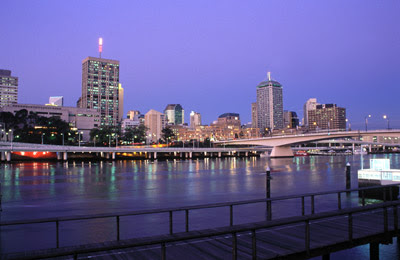Thursday, September 23, 2010
Bit depth ... explained by cake
In conversation today I was asked to explain 8-bit vs 16-bit.
Let me say at the outset that I'm on a no-sugar diet, so I'm craving cake! I can't stop thinking about cake. Mmmm ... cake ... Folk who know me know I can explain most things with cake analogies, and bit depth is no different. Here goes ...
The purpose of editing in 16-bit is to completely negate the risk of visible degradation during pixel editing. You'll be most familiar with this degradation as "banding" - where large areas of similar detail "break up" and leave visible blockiness after editing. Blue skies are notorious for it, and so are white backdrops. I discussed banding and bit depth a little in this post, and this one.
Saturday, September 18, 2010
All about monitor calibration
The answers to every question you've ever asked, wanted to ask, or didn't even know you were supposed to ask ...
What is a monitor calibrator?
It's a small hardware device that you place on your screen to perform the calibration process.
They vary in size and shape between brands, but loosely speaking they're about the size of a mouse. They are USB-powered, and come with software to control the process. They function equally well on both Mac and PC (I'm not aware of any calibrators that only work on one platform).
What is monitor calibration?
What we commonly refer to as "calibration" is actually two consecutive processes - "calibration" and "profiling". This distinction is important.
What is a monitor calibrator?
It's a small hardware device that you place on your screen to perform the calibration process.
They vary in size and shape between brands, but loosely speaking they're about the size of a mouse. They are USB-powered, and come with software to control the process. They function equally well on both Mac and PC (I'm not aware of any calibrators that only work on one platform).
What is monitor calibration?
What we commonly refer to as "calibration" is actually two consecutive processes - "calibration" and "profiling". This distinction is important.
Sunday, September 12, 2010
Resolution and resolution
Some of my readers would have seen my post entitled "Let's talk about Resolution" on the CM forum a few months ago. I've just updated and expanded it, and added it to the articles on my website:
Resolution and resolution
I hope it helps clear up some of the confusion that surrounds this topic.
Monday, September 6, 2010
"Extract then copy" vs "Copy then extract"
If you need to take someone or something out of one photo, and place them in another photo, it takes some finesse to make it look right. The size has to be right, the angles have to be plausible, and the colour and direction of the light can make or break the job. All of those things are fodder for another post on another day.
Right now, I want to talk about the cut-and-paste job itself.
Adobe give us plenty of ways to select part of a photo - magic wand, pen tool, lasso tool, marquee tool, quick mask, quick selection tool, color range, etc, etc. With each new version of Photoshop, the options become more numerous and powerful. Over time, you'll master some or all of these methods.
Here's the thing - if you want to put part of one photo into another photo, it's easy to assume that you need to cut that part out, then copy it across.
NO.
If you do it that way, you need to be 110% certain that your selection is perfect before you cut and paste. And frankly, it's impossible to be certain about that.
No, the best method is to copy the whole image across (or a generous relevant portion of it, anyway). Then use your favoured selection/extraction method to create a mask on that layer, to simply hide the unwanted background. This way, you've got infinite control over your selection, and if you discover that you messed up and gave somebody a three-fingered hand, or something, you can easily modify the mask to fix the problem.
Saturday, September 4, 2010
A fun effect
I saw somebody ask about this effect on a forum, and I thought it might be fun to play. I can't imagine anybody will ever use it, but hey, it's the weekend, why not mess around?
Before:
 After:
After:

 After:
After:

Subscribe to:
Posts (Atom)
Comments or Questions?
If you have anything to add or ask about this article, please visit me at my Ask Damien page.